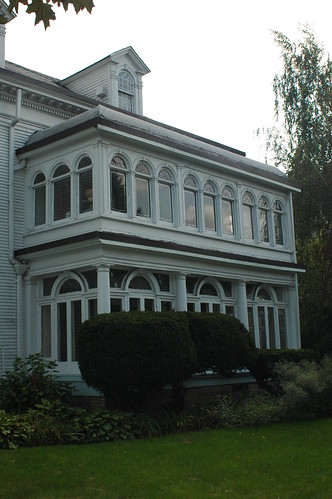[Updated 2006.09.30 16:53 EDT: Added link to 360° Virtual Tour of Ellis Island.]
A rare opportunity to visit sites and buildings closed to the public the rest of the year.
openhousenewyork hosts year-round educational programs celebrating New York City’s built-environment, culminating in America’s largest architecture and design event, the Annual openhousenewyork Weekend.
As of right now, there are 27 different tours listed, plus many other activities such as lectures and so on. The complete guide will be included in today’s New York Times (City Edition only, sorry! Distant readers and out-of-town visitors should check the Web site). Here’s a couple of highlights of interest to me:
Ellis Island’s South Side, NY Harbor, Manhattan: Tour the grounds of the abandoned Ellis Island hospital where 1 million immigrants were treated between 1900-1954. Wear sturdy, closed-toed shoes. No children under age 16 will be permitted. (To see why these two conditions are important, check out Tours A-G of Jim Galvin’s 360° Virtual Tour of Ellis Island.)
Gowanus Canal Canoe Tour, Gowanus, Brooklyn: From tidal creek to urban industrial waterway, learn the history of the Gowanus Canal as you paddle a canoe along a two-mile stretch. Look out for wildlife such as blue crabs, fish and the black-crowned night heron. Tours organized by the Gowanus Dredgers Canoe Club. Participants must sign a waiver in order to participate. (Seriously.)
Governor’s Island, NY Harbor, Manhattan: Guided tours describe the history and future of the 92-acre island’s National Historic Landmark District in the hear of New York Harbor. View military installations from the American Revolution and hear about plans for the island’s redevelopment. Organized by the Governors Island Preservaton & Education Corporation.
High Line Cell Phone Tour, Meatpacking District, Manhattan: Self-guided cell phone tour discusses various stopping points along the High Line, the disused freight rail currenlty undergoing conversion into NYC’s first elevated park. Dial the main phone number 888-7-LOOK-UP starting Saturday, Oct 7th. Each stop has it’s own three-digit extension. Organized by the Friends of the High Line.
Victorian Flatbush Walking Tour, Flatbush, Brooklyn (yep, it’s my neck of the woods!): Follow Brooklyn Borough Historian Ron Schweiger through one of the largest concentrations of Victorian Queen Anne, Colonial Revival and Greek Revival homes in the US. View journalist Nellie Bly’s former home, a 1903 japanese “cottage” and many more! Organized by OHNY.
World Trade Center — The Greening of Ground Zero, Lower Manhattan: This walking tour will discuss both the scope of the World Trade Center project, Visit the recently completed 7 WTC,and learn about current work at the site, the PATH station’s sustainable features, the memorial and other WTC buildings. Organized by GreenHomeNYC.





